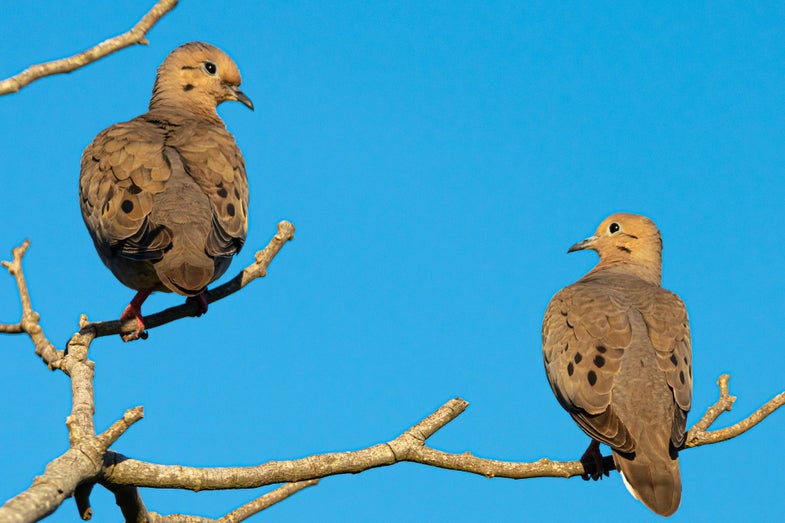How to Hunt Doves with Decoys
Doves are suckers for small decoy spreads. These easy setups that will help you put more birds in the bag

Gregarious and hardly a deep thinker-even by bird standards-the mourning dove is a sucker for a decoy spread. Although you’ll never see doves pile into your blocks like geese dropping feet down into stubble, decoys will pull birds from across a field into gun range.
The three most important rules of setting decoys? Elevation, elevation, elevation. Dove decoys disappear on cluttered ground. You have to put them up where birds can see them. Fortunately, commercial dove decoys have clips on their feet or clothespins on their breasts, enabling you to hook them to branches and fence wire. There’s little need to worry about creating landing zones and Xs, Cs, and fishhook patterns with your fake doves as you would with waterfowl decoys. Just get them up into the air.
Birds on a Wire
Hook a few decoys to the branches of a dead tree. To reach the higher branches, tie one end of some fishing line to the decoy (Flambeau doves have a loop on the back for just this purpose) and knot the other end to a sinker. Toss the weight over a branch, pull the bird up, and tie the line.

If there’s no convenient tree, bring your own. Some hunters use a Christmas tree stand and a small dead tree or limb that’s dry and straight with a few branches onto which they can clip half a dozen decoys. As doves aren’t sticklers for a realistic tree, you can make a T, 7 or 8 feet tall, out of PVC pipe and place decoys along the crosspiece. The finest setup of this kind I’ve seen is the homemade “dove wire” consisting of two 8-foot drably painted PVC pipes serving as uprights. The “wire” itself is a 10-foot length of plastic conduit, blackened with a wrap of electrician’s tape. Clip 10 to 12 decoys to the conduit in a row and push the ends of the PVC pipe into the ground, about 20 yards from your hiding place. It doesn’t matter one whit to the doves that they’ve never seen this particular wire before. Some will actually try to land on it, although most will merely pass by for a look.
Timing and Calling
Don’t use decoys on those large social-gathering or opening-day hunts. Then you want doves up in the air where everyone can shoot at them safely, not dipping low over the blocks. They aren’t necessary anyway if there are enough shooters around the field to keep the birds moving.
Decoys pay their way in harvested fields where doves feed, especially if you hunt by yourself or with a small group that can’t surround the field and cover all the approaches. Set your dove wire along one of the routes that birds fly in to feed, and it will pull them to you from all over the field.
A few decoys in a tree near a stock pond brings birds swinging extra close as they come to drink late in the day. You can even try calling water-hole doves into your setup with a barrel-type owl hooter. Cover the hole with one finger and practice until you can blow the two-note coo of the dove.